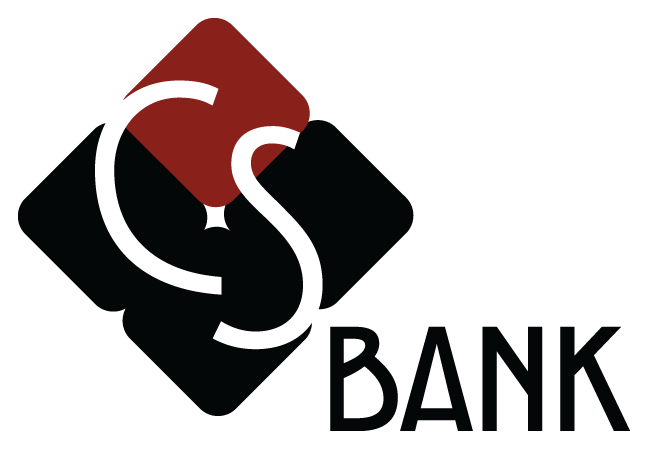not featured
2025-06-06
6/6/2025
General
published
%20(32).jpg)
Get Your Finances in Order With This Annual Checkup
Has your life changed in the past year? Whether you switched jobs, got married or divorced, had a baby, bought a house … or even if your life hasn’t changed one bit, the end of a year is always a good time check-in with your finances. Just as you go to your physician once a year for a physical check-up, you should also perform a financial health check-up on your finances. In this article, we’ll walk you step by step through the financial checkup process!
Identify your personal goals
Before you dive into your financial review, take some time to create or check your personal goals for the upcoming year. This could include things like:
- Starting a family
- Buying a house
- Starting a business
- Making a career change
- Moving to a new city
- Retirement
- …and so on!
Simply put, money is a resource to help you live the life you want. So, your goals for your life will also determine your financial goals and how you save and budget accordingly.
Get a handle on high-interest debt
Not all types of debt are created equal. While financial advisors will generally tell you not to worry about paying off secured debt (as in home mortgages and auto loans) early, unsecured debt (as in personal loans and credit card balances) typically carries a much higher interest rate.
First, make a list of any debts in your name. This includes student loans, auto loans, home mortgages, home equity loans, HELOCs, personal loans, credit card balances, or personal line of credit.
If you have a mortgage, it may be worth checking to see if you could refinance your mortgage into a lower interest rate.
If credit card debt is weighing you down, consider consolidating it with a lower interest personal loan.
Student loans and auto loans can also potentially be refinanced into a lower rate.
Make a plan to pay off any high-interest debt you’ve accrued. The two primary approaches are:
- Debt snowball: Throw all your extra money at the lowest balance first, making minimum payments on everything else. Once the smallest balance is paid off, move on to the next highest balance.
- Debt avalanche: Attack the account with the highest interest rate first, regardless of balance size. Once that is paid off, move on to the next highest interest rate.
Update your budget
If paying off debt is one of your financial goals for this year, revising or creating a budget for the first time can help with that.
A budget is a roadmap to your financial future. It helps you stay on track with your goals and aligns your spending with your true values and priorities. Regular budgeting can also help you figure out where your money actually goes and break the paycheck-to-paycheck cycle.
There are a variety of free spreadsheet templates and free or subscription apps and software for budgeting out there. Sign up for online and mobile banking to review recent and monthly transactions.
Speaking of budgeting, make sure to “pay yourself first” by automating your contributions to savings accounts and retirement accounts.
Are you saving enough? Experts recommend having three to six months of living expenses in an emergency fund. And, if you’re not already contributing to an employer-sponsored retirement account, make sure to put enough in to at least get the full employer match. Individual Retirement Accounts (IRAs) are another tax-advantaged retirement savings account option.
Beyond these two savings goals that everyone should be working towards, make a list of your personal savings goals such as:
- Saving to buy a home
- Saving for a major home renovtion project
- Saving for vacation
- Saving for a wedding and honeymoon
- Saving for your kids to go to college
- Saving to buy your next vehicle
- Saving for healthcare expenses
- Saving for the next holiday season
- …and so on!
Whatever your individual goals, create a timeline for reaching them along with the monthly amount you need to allocate from your budget for each particular savings goal.
For ways that you can maximize your return on savings accounts, check out our blog: How to Earn more Interest on Your Savings.
Check Your Credit Score
It’s a good idea to check your credit score at least once a year. You may have free access to your credit score through a credit card account. If not, you can purchase a report with your score from any of the major credit reporting agencies. Free apps like Credit Karma and Credit Sesame also offer estimates of your credit score.
If your credit score isn’t where you’d like it to be, work on raising it before applying for a new loan or credit card account. The better your score, the better your chances of getting approved with a good rate and terms. (Learn how bad credit can affect your home buying timeline.)
While we’re on the subject of credit scores, this federally-authorized website provides free credit reports from three major credit reporting bureaus. It’s a good idea to check several times a year to make sure there are no errors or signs of identity theft on your credit report.
Evaluate Your Retirement Investments
Do you have money invested in the stock market? For many people, this means a 401(k) or other type of retirement account.
If not, now is a good time to start investing and saving for retirement. Our financial advisors can help you identify your financial goals for retirement and make a plan to reach them. Contact us to schedule an initial consultation.
In addition to, or in place of a 401(k) retirement plan, you can open an IRA (Individual Retirement Account), which is another tax-advantaged savings plan. Here’s what you need to know:
- Traditional IRA: Contribute up to $6,000 per year ($7,000 for those 50+) in pre-tax dollars, lowering your overall taxable income for the year.
- Roth IRA: Contribution limits are the same as with a traditional IRA, but deposits are post-tax. Then, in retirement, you’ll enjoy tax-free withdrawals.
- New to investing? Check out our wealth management guide.
Review Insurance Policies
Reviewing your insurance policies is an important part of your personal financial planning for the new year. Update your beneficiaries as needed (for example, if your marital status changed in the past year). Consider your current coverage and decide whether you need additional or less coverage. For example, you might want to increase your life insurance coverage if you’ve taken on a home mortgage or welcomed a new baby in the past year. On the other hand, employees who switched to remote work during the pandemic may be able to reduce auto insurance costs due to less driving.
Estate Planning
As with insurance coverage, a new year is a good time to evaluate or create an estate plan.
- Does your will need to be adjusted?
- Did your primary beneficiary for your accounts and insurance policies change?
- If you had children within the last year, it’s important to create a will to ensure they are cared for.
- You should also have a living will so that your family knows your wishes and can make appropriate medical decisions on your behalf.
- Homeowners over age 62 may want to consider a reverse mortgage as part of your retirement and estate plan.
Let us help you with your New Year financial resolutions!
When it comes to financial resolutions for the new year, CS Bank offers the products and services you need to reach your financial goals. We’ve been helping individuals and families navigate money matters since we were chartered in 1912, and we can help you, too. Talk to a local financial planner, open a savings account and cash back checking, learn more about refinancing a mortgage, or check out our retirement account options. You can also visit any of our Northwest Arkansas and Cassville, MO locations for in-person help!


